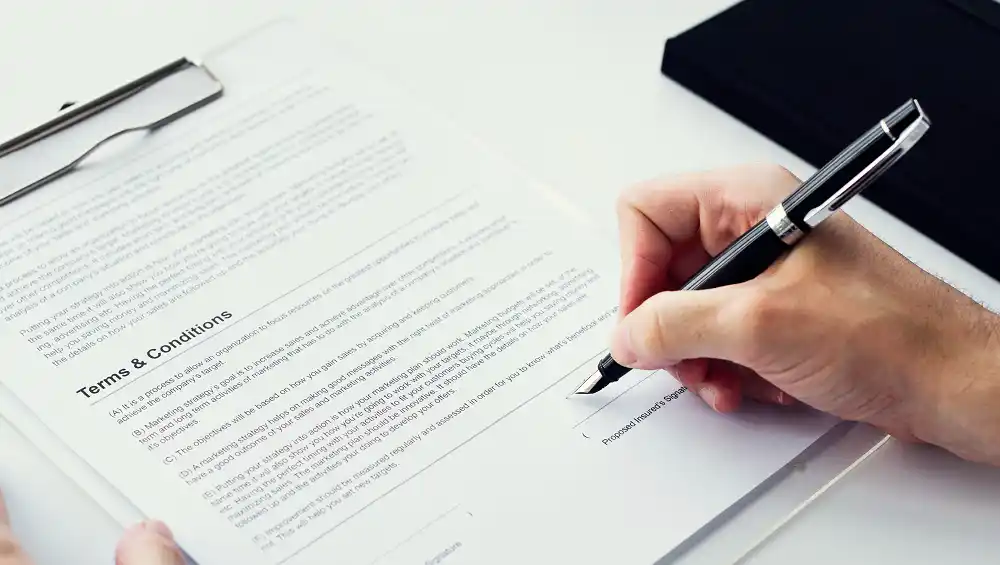There is a need to establish clear guidelines to govern the use of your website.
This is called a “terms” or “terms and conditions” page.
Aside from the terms page being a legal requirement, it’s a vital component of building trust with your audience and establishing clear guidelines for the use of your website.
It is intended to foster transparency, protect your legal interests, and contribute to the overall success of your website.
In this guide, we’ll take you through creating a Terms and Conditions page for your website.
Why your website needs a terms page

- Legal protection: It defines legal boundaries, protecting your website from potential legal disputes.
- Enhanced user trust: Transparency in terms and conditions fosters trust and confidence among your visitors.
- Clear expectations: Terms establish clear expectations for user behavior and website usage, minimizing potential misunderstandings.
- Compliance with regulations: Adherence to relevant regulations, such as GDPR and CCPA, demonstrates your commitment to data privacy.
Guidelines for creating a terms page
1. Understand legal requirements
Before diving into the content creation process, familiarize yourself with the legal requirements governing your website.
Research applicable laws and regulations to ensure your terms and conditions align with industry standards and protect your business and users.
2. Identify relevant regulations
Research and understand the relevant data privacy regulations applicable to your website.
3. Gather the necessary information
Collect information about your website’s services, limitations, and intellectual property rights.
4. Outline terms
Begin by outlining the terms of use for your website.
Clearly state the rules and guidelines visitors must follow while interacting with your content, services, or products.
Cover areas such as acceptable user behavior, prohibited actions, and user responsibilities.
5. Specify user responsibilities
Clearly articulate the responsibilities of users when using your website.
This may include adhering to community guidelines, respecting intellectual property rights, and maintaining the confidentiality of login credentials.
6. Define intellectual property rights
Specify the ownership and usage rights of intellectual property on your website.
Clarify whether users can use, share, or reproduce your content and under what conditions.
7. Explain Privacy and Data Handling
Clearly explain how user data is collected, processed, and stored on your website.
Address privacy concerns and data protection measures, and provide information on how users can manage their data preferences.
8. Payment and Refund Policies
If your website involves transactions, outline payment terms and refund policies.
Clearly state the pricing structure, payment methods accepted, and any conditions or limitations associated with refunds.
9. Limit Liability
Include a limitation of liability clause to protect your business from potential legal claims.
Clearly state that your website and its content are provided “as is” and that you are not responsible for any damages or losses incurred by users.
10. Dispute Resolution and Governing Law
Include provisions for dispute resolution and specify the governing law that will apply in cases of legal conflicts.
This adds clarity and transparency to the legal framework of your website.
11. Update and Modification Policies
Communicate your right to update and modify the content of the terms page.
Specify how users will be notified of changes and when the modifications will take effect.
Regularly review and update your terms and conditions to reflect any changes in your business practices.
12. Legal Review
Before publishing, consider seeking legal advice to ensure your terms and conditions comply with relevant laws and adequately protect your interests.
This step is crucial for maintaining legal compliance and building trust with your audience.
13. Hyperlinking to relevant site content
Utilize hyperlinks to direct users to relevant sections within the document, the rest of your website, or external resources.
14. Periodically Review and Update
Regularly review and update your terms page to reflect changes in your website, services, or legal regulations.
Steps to creating a terms page
- Log in to your WordPress dashboard and navigate to “Pages” > “Add New.
- This is where you’ll create and publish your Terms and Conditions page.
- Choose a straightforward title like “Terms of Service” or “Terms and Conditions” for clarity.
- Write detailed information about your terms using the guidelines above. Include details about:
- Permissible and prohibited activities on your website, including intellectual property rights.
- Acceptable behavior expectations, addressing issues like harassment and offensive content.
- Clarification that the website and its contents are provided “as is” without any guarantees.
- Limitation of liability that limits your legal liability for any damages arising from website usage.
- How you collect, use, and protect user data in compliance with relevant regulations. You can include a link to your privacy policy.
- The conditions under which you reserve the right to terminate user access.
- The legal jurisdiction governing the interpretation and enforcement of the T&Cs.
- When finished, click on the “Publish” button to make your terms page public.
- Include a link to your terms page in a conspicuous section of your website’s footer.
Did you enjoy this post?
If so, please share it with your friends and followers on social media! It's a great way to help others learn about WordPress and to support our blog. You can use the share buttons below...
Elevate Your Brand with Professional Website Design
Discover how we can transform your online presence with professional website design services. We specialise in creating modern, user-friendly websites tailored for the medical, legal, university, and Christian sectors. If you're ready to elevate your brand and connect with your audience more effectively, contact us today to get started!
Tutorials on YouTube
And if you’re looking for more in-depth WordPress tutorials,be sure to subscribe to our YouTube channel! We have a wide variety of videos on WordPress.
